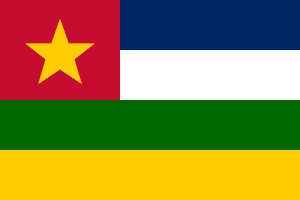Difference between revisions of "Language/Pulaar/Grammar/How-to-Use-Have"
m (Quick edit) |
m (Quick edit) |
||
| Line 85: | Line 85: | ||
* [[Language/Pulaar/Grammar/Conditional-Mood|Conditional Mood]] | * [[Language/Pulaar/Grammar/Conditional-Mood|Conditional Mood]] | ||
* [[Language/Pulaar/Grammar/How-to-Use-Be|How to Use Be]] | * [[Language/Pulaar/Grammar/How-to-Use-Be|How to Use Be]] | ||
<span class='maj'></span> | |||
==Sources== | |||
* [https://polyglotclub.com/wiki/Language/Pulaar/Grammar/How-to-Use-Have Pulaar Grammar - How to Use "Have"] | |||
* [https://nalrc.mybigcommerce.com/pulaar-learners-reference-grammar/ Pulaar Learners' Reference Grammar] | |||
{{Pulaar-Page-Bottom}} | {{Pulaar-Page-Bottom}} | ||
Revision as of 14:25, 12 March 2023
Hi Pulaar learners! 😊
In this lesson, we will learn how to use "have" in Pulaar. "Have" is a very useful word that you can use to talk about possession, actions, and many other things. After reading this lesson, you will be able to use this word like a native speaker. So let's get started!
"Have" in Pulaar
The word for "have" in Pulaar is "njaay," which is usually followed by a verb in the infinitive form. For instance, "njaay mi wiyaade" means "I have to go," or "njaay mi boom" means "I have a house." Depending on the context, "njaay" can also mean "there is" or "there are" in Pulaar.
"Have" can also be used to express past actions in Pulaar, just like in English. For instance, "maa njaay naati rew" means "I had eaten the rice," or "Alaa njaay teeme" means "Alaa had called."
Now let's look at some examples of how to use "njaay" in Pulaar:
| Pulaar | Pronunciation | English |
|---|---|---|
| Maa njaay mi alma | /maa nʒaaj mi alma/ | I have a pen |
| Ngeen njaay pictuur | /ŋeen nʒaaj pictuur/ | They have pictures |
| Aam njaay waɗde kono / Aam njaay kono waɗde | /aam nʒaaj wadde kono/ or /aam nʒaaj kono wadde/ | We have a lot of work to do |
| Maa njaay daanoo demgaa | /maa nʒaaj daanoo demgaa/ | I have been sick for two days |
Using "Have" to Ask Questions
In Pulaar, we use "njaay" to ask questions about possession. For instance, "Njaay ndeede?" means "Do you have money?" or "Njaay bondaagi?" means "Do you have a car?"
Here are some examples of how to use "njaay" to ask questions in Pulaar:
- Person 1: "Njaay way?" (Do you have tea?)
- Person 2: "Haa, maa njaay way." (Yes, I have tea.)
- Person 1: "Njaay fotiima jamma ndee?" (Does Fatima have any money?)
- Person 2: "Haa, njaay ndee." (Yes, she does.)
Using "Have" with Adjectives
We can also use "njaay" to link adjectives to nouns in Pulaar. For instance, "mawɗe njaay ndeewal" means "the big house," or "cede njaay mawɗe" means "the small chair."
Here are some examples of using "njaay" with adjectives in Pulaar:
| Pulaar | Pronunciation | English |
|---|---|---|
| Suuf njaay lebbi ɗeeɗoo | /suuf nʒaaj lebbi ɗeeɗoo/ | The hot sun |
| Yooɓiraa njaay bannge wuro | /yoɓiraa nʒaaj bannge wuro/ | The cold watermelon |
Using "Have" to Express Obligation
We can use "njaay" to express obligation in Pulaar as well. For instance, "Njaay mi wiyaade" means "I have to go," or "Njaay mi yiɗde ɗum ko" means "I have to finish this."
Here are some examples of using "njaay" to express obligation in Pulaar:
- Person 1: "Aam njaay aadi ko ɓalle?" (Can we have dinner together?)
- Person 2: "Haa, maa njaay yiɗde ɗum ko." (Yes, I have to finish this first.)
- Person 1: "Njaay mi anndu lebde taggere?" (Do I have to wear a tie?)
- Person 2: "Eya, njaay miyo." (Yes, you do.)
Conclusion
Congratulations! You now know how to use "have" in Pulaar. Keep practicing this word and you will become more comfortable with it over time. To improve your Pulaar find native speakers and ask them any questions. And for more information about Pulaar grammar, check out our Pulaar grammar section on Polyglot Club to take your learning to the next level.
➡ If you have any questions, please ask them in the comments section below.
➡ Feel free to edit this wiki page if you think it can be improved. 😎
Related Lessons
- Adjectives
- Pronouns
- Give your Opinion
- Gender
- Negation
- Questions
- Future Tense
- Conditional Mood
- How to Use Be
